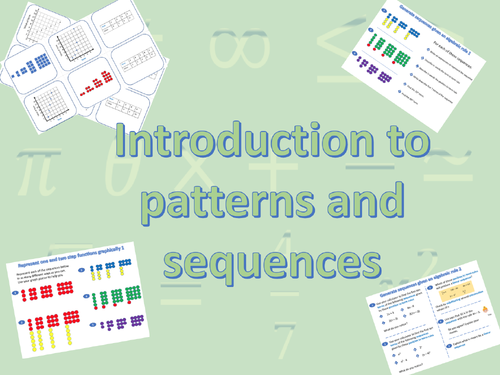









This 2 week unit of work on patterns and sequences contains a fully animated powerpoint, worksheets and activities in a mastery style approach to teaching. Suggested activities are given for use of afl (eg miniwhiteboards), the use of manipulatives where appropriate and also provides suggestions for carrying out each slide or activity. This work has been put together from the planning I have done from the WRM scheme and can also be found in the work I have uploaded for week 1 and week 4. (If you already have purchased these, you can put them together yourself and there will be no need to buy this resource).
It contains approximately 2 week’s worth of work depending on the class and age of students and time allowed to teach it. For eg, the first lesson I actually allow about 3 lessons to complete, some schools may not have the time to do this depending on their SOL. Suggestions are given where lessons may start and end but that is up to individual teachers, the length and number of lessons per week.
Whilst I prefer the WRM small steps and the order they are teaching things, I also recognise that not all schools are following the WRM scheme and so by putting topics together, the work can also be used in other schemes and other year groups and for revision. If you decide to use this with KS4, feel free to change the images to suit an older audience (obviously ensuring you own the images for copyrite purposes). I personally find that it isn’t necessary to change images but that is personal preference.
There is at this stage, no formal mention of nth term yet the later lessons address position to term terminology and lead themselves onto nth term depending on whether the students are there yet.
It covers the WRM small steps as follows
• Describe and continue a sequence given diagrammatically
• Predict and check the next term(s) of a sequence
• Represent sequences in tabular and graphical forms
• Recognise the difference between linear and non linear sequences
• Continue numerical non linear sequences
• Explain the term to term rule for numerical sequences in words
• Find missing terms within sequences
• Generate sequences given an algebraic rule
I hope you find it useful :-)
Something went wrong, please try again later.
This resource hasn't been reviewed yet
To ensure quality for our reviews, only customers who have purchased this resource can review it
Report this resourceto let us know if it violates our terms and conditions.
Our customer service team will review your report and will be in touch.